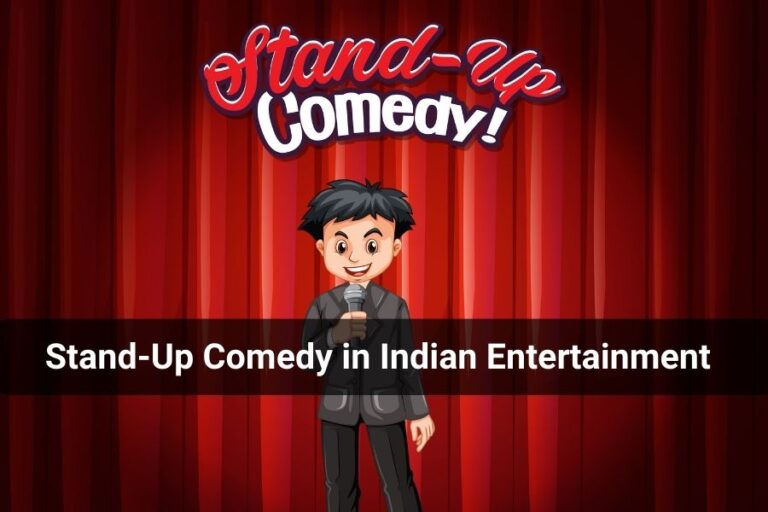Stand-up comedy in India has undergone a remarkable transformation, transitioning from a fringe activity to a multifaceted force shaping the entertainment landscape. Its impact extends far beyond eliciting laughter, playing a crucial role in amplifying diverse voices, breaking comedic molds, bridging generational divides, and even catalyzing social change.
Elevating Diverse Voices:
Gone are the days of homogenous comedic portrayals. Stand-up has become a platform for individuals from diverse backgrounds, cultures, and perspectives. Urban millennials tackle dating woes, rural comedians satirize village life, and LGBTQ+ voices find their stage. This inclusivity not only entertains but also challenges biases and broadens perspectives, enriching the comedic fabric of the nation.
- Vir Das: A pioneer of English stand-up in India, his sharp wit and observations on social issues resonate with urban millennials.
- Aditi Mittal: One of the first female stand-up comedians, she tackles gender stereotypes and societal expectations with insightful humor.
- Zakir Khan: His Hindi stand-up delves into personal experiences and cultural nuances, connecting with audiences across generations and backgrounds.
Breaking the Mold:
Stand-up has moved beyond slapstick and Bollywood-inspired gags. Observational humor, witty puns, and self-deprecating jokes now reign, catering to a generation seeking intellectual stimulation alongside laughter. This shift in style pushes boundaries, paving the way for nuanced and thought-provoking humor that resonates with a generation raised on internet wit and sarcasm.
- Kenny Sebastian: His absurdist humor and self-deprecating style challenge traditional comedic formats, attracting a younger audience seeking intellectual stimulation.
- Sumukhi Suresh: Her observational humor and witty social commentary push boundaries, often addressing sensitive topics with a light touch.
- Biswa Kalyan Rath: His dark humor and satirical observations on Indian society offer a unique perspective, finding favor with those seeking thought-provoking comedy.
Bridging the Generational Divide:
While some comedians target specific demographics, others master the art of universal appeal. Jokes about family dynamics, societal quirks, and everyday struggles find laughter across generations, fostering a sense of shared experience and cultural understanding. Family-friendly stand-up nights further bridge the gap, bringing together parents and children for wholesome evenings of shared amusement. This ability to transcend age brackets allows stand-up to become a unifying force within families and communities.
- Raju Srivastava: His clean, family-friendly humor appeals to audiences of all ages, drawing laughter from grandparents to grandchildren.
- Papa CJ: His relatable jokes about everyday life and relatable situations resonate with families, fostering shared experiences across generations.
- Varun Thakur: His stand-up often features his parents, creating a humorous bridge between generations and offering a glimpse into family dynamics.
Also Read: Laughter Lies in the X-Chromosomes: 5 Best Indian Women Comedian
Content Creation Catalyst:
Stand-up comedians are no longer confined to the stage. Their talent fuels the content creation boom, with successful comics transitioning into scriptwriting, acting, and hosting shows. This cross-pollination injects fresh perspectives and comedic styles into movies, web series, and television, enriching the overall content landscape.
- Kapil Sharma: A successful stand-up comedian turned TV host, his popular show “The Kapil Sharma Show” showcases comedic talent and provides a platform for new voices.
- Zakir Khan: His stand-up specials on Netflix have garnered international acclaim, showcasing Indian comedy to a wider audience.
- Kaneez Surka: Her comedic writing shines in web series like “Humorously Yours,” highlighting the versatility of stand-up comedians in the content creation space.
Humor as a Catalyst for Change:
Stand-up often doubles as a platform for social commentary. Comedians shine a light on critical issues, from gender inequality to political satire, using humor to raise awareness and spark dialogue. By challenging stereotypes, highlighting inequalities, and prompting discussions, stand-up comedy becomes a powerful tool for social progress. Laughter may not solve all problems, but it can certainly start conversations and pave the way for positive change.
- Abhishek Upmanyu: His stand-up often tackles social issues like casteism and sexism, using humor to spark conversations and challenge stereotypes.
- Aditi Mittal: She advocates for gender equality and LGBTQ+ rights through her stand-up, raising awareness and promoting social change.
- Varun Grover: His satirical humor often targets political figures and social injustices, highlighting the power of comedy to hold the powerful accountable.
Challenges and the Road Ahead:
Despite its remarkable journey, stand-up comedy in India still grapples with hurdles. Censorship concerns, limited performance spaces, and the need for more diverse representation remain challenges. However, the internet has emerged as a game-changer, providing comedians with alternative platforms and a wider reach. With increasing popularity and growing online communities, the future of stand-up comedy in India appears bright. It’s poised to continue its evolution, pushing boundaries, amplifying diverse voices, and shaping the entertainment landscape for years to come.
The Role of Social Media:
Social media platforms like YouTube and Instagram have been instrumental in promoting stand-up comedy in India. Comedians share snippets of their routines, engage with audiences, and build online communities, fostering a vibrant online comedy scene. Platforms like Netflix and Amazon Prime Video have also provided comedians with wider reach, showcasing their talent to a global audience.
Upcoming Trends and Future Directions:
- Regional stand-up: Stand-up in regional languages like Tamil, Telugu, and Marathi is gaining traction, catering to diverse audiences and enriching the overall comedic landscape.
- Interactive formats: Stand-up nights are increasingly incorporating audience interaction through improv games and social media engagement, creating a more dynamic and immersive experience.
- Digitalization: Stand-up is embracing online platforms for live streaming and virtual shows, expanding reach and accessibility beyond physical venues.
Conclusion:
Stand-up comedy in India has evolved from a niche activity to a vibrant and impactful force in the entertainment landscape. It amplifies diverse voices, challenges stereotypes, bridges generational divides, and even catalyzes social change. With its ever-evolving trends, increasing online presence, and commitment to pushing boundaries, stand-up comedy is poised to continue shaping the Indian entertainment landscape for years to come. Its unique ability to entertain, inform, and inspire makes it a valuable and indispensable part of the cultural fabric of the nation.
Banner Image Source Image by brgfx on Freepik
![]()



